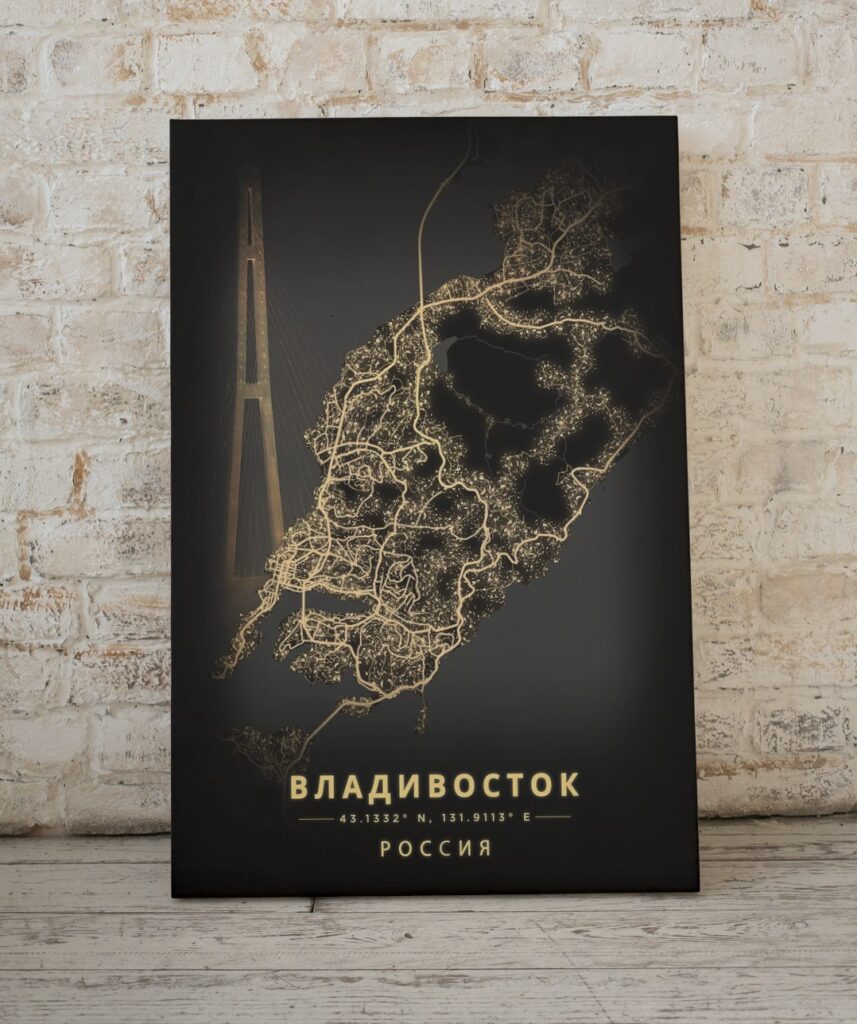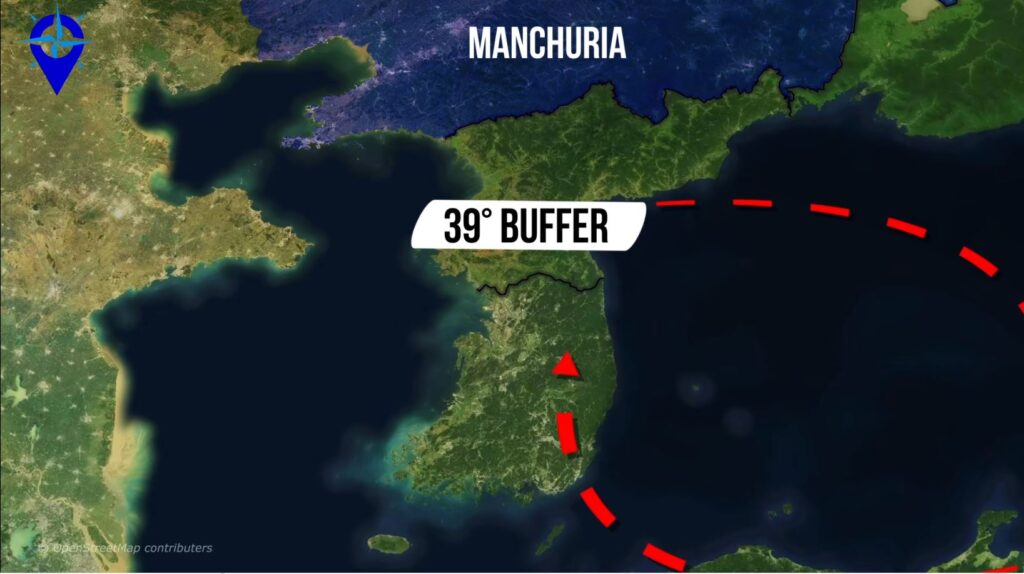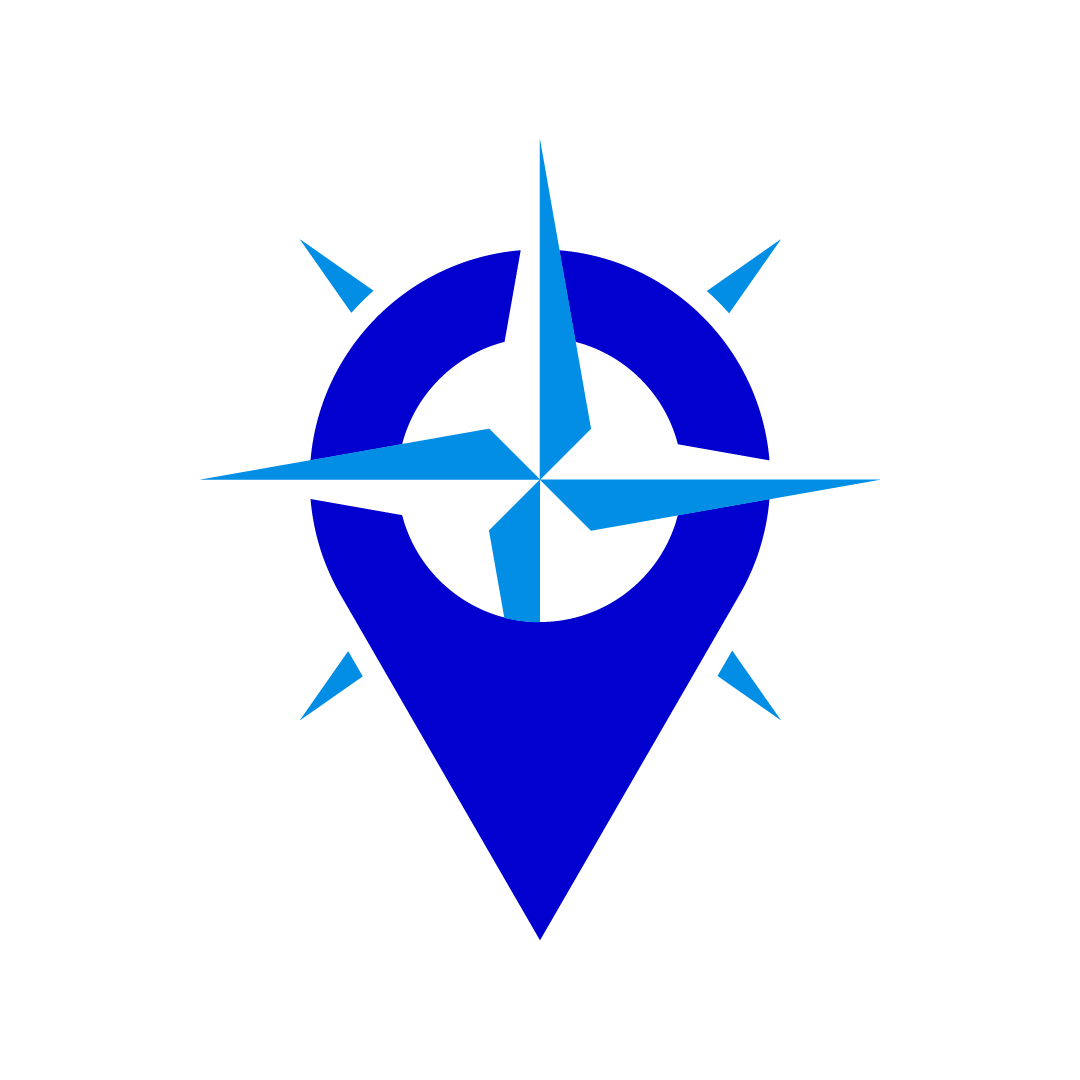Clearly marked on any map as it is the capital of Primorsky Kry; Vladivsotok sits on the very edge of mainland Russia.
It is about 6400 kilometers east of Moscow and only about 6000 kilometers north of the northernmost islands of Australia. Far closer are the capitals of North and South Korea; As it’s just 680km southwest to Pyongyang and 740 to Seoul respectively.
But while its neighbors such as Seoul harbor almost 10 million people Vladivostok itself is only the 27th largest city in Russia with a very European-sized population of about 600 thousand.
While this may make Vladivostok sound remote it is in fact the largest port in the Far East Region of Russia making it an invaluable asset with an annual throughput of 10 million tons.
The official symbols of the city are a tiger, hills, bridges, the Sea of Japan, and the Pacific fleet.
While One of the most well-known unofficial symbols is Zelyony Ugol (Green Corner), the largest market for used Japanese cars in Russia which has played an important role in the economy of the city ever since the break up of the Soviet Union.
Vladivostok is also the final destination of the famous Trans Siberian Railway which connects most of the major cities of Russia creating the world’s longest railway line. Meaning with just one connection in Moscow you could take a train all the way to St Petersburg or even Paris.
So let’s talk about it –
Who lived in these lands before Russians occupied them?
When and why was Vladivostok established?
How did the city contribute to the wars of the early 20th century?
And most importantly how is it possible that you can cut a car in half, ship it from Japan. Weld it back together and make a profit?

Lets Roll!!!
The earliest mention of civilization in this region goes back to 698 when it was inhabited by the Balhae.
Archaeological evidence suggests that the Balhae culture was an amalgamation of High Tang Chinese, Korean, and Tungus cultures with a population of about 500,000.
There was little to no agriculture yet and so most of the kingdom’s population was semi-nomadic.
There is evidence of these people using both traditional Chinese imported from the Tang dynasty but there is also evidence of them having developed their own scripts.
Of course Chinese historians today have very practical reasons for claiming that the early civilization in the region spoke some version of Chinese thereby giving China a legitimate cultural claim to the region.
Not that Russia cares – have you heard about the Kuril Islands – Japanese people lived there for centuries and they are never getting those back.
Anyway, a final interesting possibility about the Balhae people may be that an eruption of Mount Paektu between the 930s– and 940s may have put an end to this civilization – this speculation is based on records of massive population displacement into nearby regions.
After this, the lands were mostly inhabited by Mongolic tribes including the Mongols themselves who invaded around 1233 enveloping this region into relative historical darkness and obscurity.
While some Chinese settlers may have returned to the lands in the centuries after this
they remained sparsely populated mostly because the Chinese, Koreans and even the Japanese chose to pursue policies of self-isolation and protectionism since they had suffered so much from the onslaught of Mongolian hordes.
Historically this didn’t work out for them as the East Asian nations were all technologically and economically eclipsed during the most important years of exploration and colonialism giving European nations the opportunity to expand.
Some of which expanded a lot –
As the various remaining Mongolian States collapsed – Russia rose and filled the power vacuum left behind – expanding all the way to the easternmost corners of the continent and even Alaska.
They did eventually bump into Chinese resistance however and were temporarily stopped. But this did not last long as multiple European powers brought the once-great empire to its knees during the Opium Wars.
And so after being thoroughly humbled China was forced into a number of so-called Unequal treaties
Which were extremely favorable for the European powers.
So in 1858 and 1860 the defeated Chinese gave Russia what it wanted – more land
But this land was different for it finally gave Russia the deepwater port it had long been searching for and an opening into the Pacific Ocean.
And so on July 2nd 1860 a military unit was sent to Golden Horn Bay to establish an out-post, which received the name Vladivostok.
Also, a special commission made a decision on the appointment of Vladivostok as the main port of the Russian Empire in the Far East
In the 1870s, the government started encouraging resettlement to the South Ussuri region, and the population of the post increased significantly: according to the first census of 1878, there were 4163 inhabitants.
In 1880 Vladivostok officially received the status of a city – it prospered as many new trade relations were established and lots of foreign workers started flocking to the city.
The city arguably reached its golden age when the final segment of the Trans Siberian Railway was completed along with the Chinese Eastern Railway in the 1890’s
and so by the end of the century, the city reached a population of over 100 thousand.
However, difficult times lay ahead for Russia, and one of the first major events which would set its Imperial government on course for destruction happened in the far east.
Seeing Russia as a rival, Japan offered to recognize its dominance in Manchuria in exchange for recognition of Korea being within the Japanese sphere of influence.
Russia refused and demanded the establishment of a neutral buffer zone between in Korea north of the 39th parallel.

The Japanese government perceived a threat to their plans for expansion into mainland Asia and chose instead to go to war.
So after these negotiations broke down in 1904, the Japanese Navy opened hostilities in a surprise by attacking the Russian Eastern Fleet at Port Arthur in China.
Port Arthur fell to the Japanese and the Russian fleet station there was told link up with the one stationed in Vladivostok.
Another fleet was on its way from the Baltic Sea – it too was on its way to link up in Vladivostok.
This led up to the famous battle of Tsushima.
“It was naval history’s first, and last, decisive sea battle fought by modern steel battleship fleets”
Meaning there has never been any other battle where a fleet made up of modern vessels was completely annihilated
It was probably the most humiliating defeat in Russia’s history, which lost all its battleships and most of its cruisers and destroyers.
An estimated 127’242 tons of ships were sunk during the encounter. 99.6% of this weight belonged to Russian ships.
The Japanese navy was faster more modern and it did not have to swim halfway around the world to get to its target.
The complete Japanese victory surprised international observers and transformed the balance of power, resulting in Japan’s emergence as a new player on the international stage and Russia’s decline in prestige and influence in Europe.
The humiliating defeat for the Russian Empire contributed to growing domestic unrest which culminated in the 1905 Russian Revolution and accelerated the disintegration of the Russian autocracy.
The war also marked the first victory of an Asian country against a Western power in modern times.
This wasn’t all bad for Vladivostok – Now that Russia was no longer leasing Port Arthur from the Chinese it once again became the most important trading port in the far east – even though it would freeze over during wintertime. Were as Port Arthur stayed open year-round.
The population of the city exceeded 100 thousand and most curiously Russians accounted for less than half of all of those people.
The news of the beginning of the First World War came to the Far East in the form of a short coded telegram from St. Petersburg – Germany had declared war on Russia
The troops situated in Vladivostok and around Primorsky Kry situated about 10’000km away from the front lines of the First World war were not supposed to get involved in the fighting, but to continue serving in the Far East.
After all, the now powerful Japanese Empire was nearby.
Until 1914, all Russian troops in the Far East were preparing for conflict with the Japanese.
Luckily however, on August 23, 1914 – Japan declared war on Germany, actually joining the alliance of England, France and Russia.
this was done not out of altruistic motives, but with a desire to seize the colonies of the “Second Reich” on the Chinese coast and the Pacific islands.
This “almost allied” status of the Japanese neighbor made it possible to begin the mobilization and transfer of “Siberian” divisions as they are called. To the German facing front.
It is curious that the Germans during the First World War called the Cossacks from the far east as the “Manchurian Cossacks”. Whereas in Russia all soldiers from the Far East were just “Siberian”.
But of course this meant that the far east became essentially defenseless.
Still, Vladivostok was now the most important port of Russia.
The conflict with Germany blocked the sea trade of St. Petersburg and other Baltic and Finnish ports of the Russian Empire.
And When Turkey entered the war three months later, the ports of the Black Sea also became useless.
Murmansk and the railway to it simply did not exist yet at the start of the war.
And the port of Arkhangelsk as usual was frozen up.
All international trade and war aid now had to go through Vladivostok and it became imperative to accelerate the construction of new port facilities.
After general mobilization, the size of the Russian army exceeded 5 million people, and the hostilities unfolded over a vast area – from the Baltic to the Transcaucasia.
The gigantic front and the huge number of troops required an unprecedented expenditure of material resources.
Russia exhausted it’s resources almost immediately within months of the beginning of the war.
Since its own industry could not cope with the growing military orders, only purchases from abroad and their delivery to the front through Vladivostok could supply Russia’s desperate defence
Intensive work on the expansion of the Vladivostok port started immediately after the start of the war.
So by 1915, the port received a million tons of foreign cargo – almost four times more than in 1913
Ironically while Japan was still perceived to be the biggest threat in the East it was their support of 970 thousand rifles which equipped some 20 divisions of men.
Of course Russia paid a high price for these rifles.
In 1916 payments in Russian gold for military orders approached 300 million rubles, accounting for more than half of all budget revenues of the Japanese Empire.
The only other option was to give up possession of land
With all these goods arriving in Vladivostok the railways could not cope with the load which was arriving on steamers in increasing numbers.
And they tried to solve this problem by importing even more.
Yes they imported steam locomotives and carriages from the United States.
Indeed most American steamers that arrived in Vladivostok in 1914 were loaded with steam locomotives, wagons, rails, and other railway equipment.
Russia bought more than 13 thousand cars in the USA and Canada – All of them disassembled were delivered by sea to Vladivostok.
Despite the Russian efforts to export everything to the front Vladivostok was the main bottleneck
And cargo began to accumulate
The total cost of imported materials, piling up the main port of the Far East, was estimated at more than one and a half billion tsarist rubles, which was equal to half of the budget of the Russian Empire in the pre-war years.
After 1917 the war became increasingly unpopular with the Russian populace. Political and social unrest grew, with the Marxist antiwar Bolshevik Party increasing its support and Large numbers of common soldiers either mutinied or deserted from the Imperial Russian Army.
This lead up to the Treaty of Brest-Litovsk. The communist party essentially had enough power to negotiate its own peace treaty with Germany and the Central Powers.
Faced with these events, the British and French governments decided upon an Allied military intervention in Russia.
And the first allied troops (mostly made up of US soldiers) were sent to Arkhangelsk and Vladivostok in order to protect the supplies that had been pilling up in the port cities from falling into the hands of the Germans.
The Japanese could now also freely enter Vladivostok and points along the China–Russia border.
Over 70 thousand Japanese troops entered Russia this way.
The deployment of such a large force for a rescue operation made the Allied Powers wary of Japanese true intentions.
By November 1918, the Japanese occupied all ports and major towns in the Russian Maritime Provinces.
They desired the establishment of a buffer state in Siberia, and the Imperial Japanese Army General Staff viewed the situation in Russia as an opportunity for settling Japan’s “northern problem”.
The Japanese government was also intensely hostile to communism.
And as such with the aid of other allied powers a number of Bolshevik uprising in the East including Vladivostok were stopped.
But By the 1920s it was clear that the Bolsheviks were going to win the Civil War in Western Russia.
And so The Allied Powers withdrew their support while The Japanese military stayed in the Far East until 1922 and
only left Northern parts of Sakhalin Island in 1925
after agreeing to enforce agreements following the Russo-Japanese War of 1904 with the new Bolshevik government.
By the time of the Soviets, Vladivostok was in decline: the retreating forces of the Japanese army removed all material value from the city.
Life was paralyzed: there was no money in the banks, the equipment of enterprises had been plundered.
And Due to mass emigration and repression, the city’s population decreased to 106 thousand.
During the 1930’s and 1940’s Vladivastok became an important transit point for prisoners who were destined for various labor camps in the far east and Siberia.
And a massive concentration camp that could hold up to 56 thousand prisoners was established not far from the city.
Vladivostok managed to get through the Great Patriotic War without direct hostility – this was despite the fact that there was the constant threat of attack from Japan whose naval and military presence vastly exceeded that of the Russians in the region – It also certainty felt inevitable – why wouldn’t Japan take advantage of Russia while it was struggling with the German invasion in the West?
While the Japanese may have wanted to invade the soviet union as they despised the soviet regime they were simply tied with their war in China and the pacific region.
Subjugating China was a massive undertaking – made more difficult by bad infrastructure. Invading Russia in addition to China would have been a bit of a stretch – though such considerations didn’t stop others from trying.
Although it’s not exactly a fair comparison. Germany had massive superiority in terms of its industrial capacity and capability of absorbing losses – Japan couldn’t. Its total strength was for more limited though it did have naval superiority.
But back to Vladivostok – during the war it processed cargo in larger quantities than both Murmansk and Archangelsk combined.
An interesting hero of the war was Anna Ivanovna Shchetinina she was a Soviet merchant marine sailor who became the world’s first woman to serve as a captain of an ocean-going vessel.
Contributing to the transportation of cargo from the US to Vladivostok and aiding in the evacuation of people from Tallinn during the The Baltic Sea Campaigns.
Over 70’000 of its residents were sent to fight on the Western fronts protecting Moscow, fighting in Stalingrad, Ukraine, Belarus and many marched into Berlin.
In the final days of WW2, the military bases at Vladivostok collectively served as the staging point for the offensives against Japanese forces in northeastern China, northern Korea, the Sakhalin, and the Japanese Kurile Islands.
After the many years of War Vladivostok wasn’t in a great state. The city didn’t even have a sewage system going in into the 1950s.
But overall Russia was on a path to recovery with the country seeing its standards of living rise.
And with Nikita Khrushchev showing particular interest in improving Vladivostok to make it look more like San Francisco – a city which it is often compared with.
A number of infrastructure plans were made and Vladivostok was slowly but surely on its way to looking like the modern city of today.
While in practice the city had already been closed to foreigners for many years it was in the 1950’s that it was officially closed off to foreigners as it had the important military role of hosting Russias Pacific Fleet.
Even Russians themselves needed to receive permits to be allowed to visit usually needing locals or their family members to request special permission to host them as guests.
This was not that unusual in Soviet Russia and Even today there are still cities that are closed off that access of which requires special permission.
December 26th 1991 was the last day of the Soviet Union and Mikhail Gorbachev resigned the red flag over the Kremlin replacing it with the Russian tricolor reminiscent of Imperial Russian colors.
The next morning the Soviet people woke up in a new country.
The initial shock devastated the economy. Businesses all over the country that used to operate with a helping hand from the soviet government suddenly had to learn to operate in an open market and compete with foreign businesses.
People lost jobs. Weren’t being paid and had to look for alternative ways of surviving.
It was a rough sudden transition.
But the people of Vladivostok had one ace up their sleeve that helped them get through the worst of it.
Japanese cars were first imported to Vladivostok at the end of the 80’s when it was still a closed city.
Auto import completely changed the face of the city and the dynamics of its economy.
It was a business for the common man, allowing people like officers, fishermen, and scientists who lost their jobs get a second chance.
Russian Residents were amazed by the options available in Japanese cars such as air conditioning and automatic transmission – some were even happy to exchange their apartments for the imported vehicles.
This also meant that in the far east the wast majority of cars adopted right-side steering wheels whereas in Russia traffic is on the left side as in continental Europe.
While the internal market of Vladivostok and Primorsky kry was relatively small the business boomed because of all of the demand from all over Siberia.
Moscow wasn’t pleased with the rapid growth of the Far East car market, seeing it as a threat to the Russian industry attempting to prohibit the operation of right-side steering vehicles in Russia, but it backed down in the face of many protests. Instead, the government has been slowly ramping up taxes on various methods of importation to make it less profitable.
A record number of cars passed into the far east in 2008, when more than half a million were brought in.
This probably co-incided with Russias short-lived economic boom which was largely fuelled by increasing oil prices before the recession really kicked off in 2014
A common way of avoiding taxes for the car salesmen was to import car parts separately and then assemble the cars in the port.
A common myth was that some cars would be literally sawed in half and then welded back together to be sold. Though I have not been able to confirm this claim.
The “Green Corner” in Vladivostok, although somewhat shrunk in size, is still full of cars. The used car market has long been predicted to disappear, but it seems that this is still a long way off.
According to the Russian Census of 2010, Vladivostok’s residents include representatives of over seventy nationalities and ethnic groups.
But even though it is one of the most easternmost metropolitan cities in Russia the wast majority of people living there are Ethnic Russians.
And Vladivostok has actually lost a lot of the multinational diversity it had going into the 19th century when entire national quarters for Chinese, Korean and Japanese citizens existed all of which gradually disappears following the long years of war and turmoil of the early 20th century.
Vladivostok is a city with a lot of potential. With open access to pacific trade routes, it should embrace trade and lets its people prosper.
Additionally, the region as a whole contains an immense wealth of natural beauty.
If Russia embraces openness and change and keeps investing in the infrastructure and educational facilities of the cities then Vladivostok really could someday become the San Francisco of but as of now it still has a long way to go.
But this does not mean that the city isn’t worth a visit. For it has an immense wealth of history and by being distinctly Russian in its ethnic character it has lots to give to its Asian visitors who want to experience something essentially European in the far far east.

